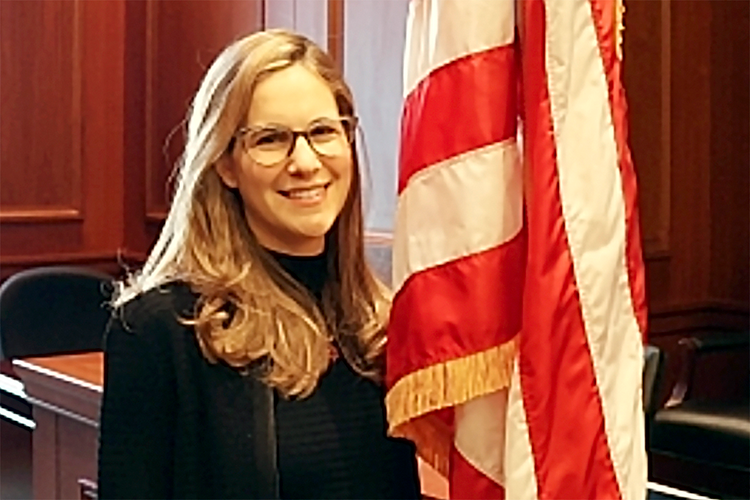Law Tech Generations
Three years ago, a major international corporate client found itself repeatedly posing the same basic kind of question to its lawyers at St. Louis-based Bryan Cave: Could it import or export certain products?
That meant a lot of phone tag, not to mention expense. Now there’s less of both. Bryan Cave has created a secure, “smart” area on its Web site where the client’s in-house lawyers, or the businesspeople themselves, can work their way through a question-answer decision tree to solve their problems. And if the answer is not there, a Bryan Cave lawyer will post one.
Thus began TradeZone in 2001, now one of many Web-based legal tools for the firm’s clients. Areas covered include sexual harassment compliance, duties of officers and directors, and campaign finance regulations. These tools are offered on a fixed-fee basis with no limit on access or use.
Bryan Cave is one of a small number of firms that have entered the so-called third generation of law firm Web sites. These firms are moving fast to revamp their presence on the Internet. They have quickly adapted since user-friendly browsers brought law firms onto the Web roughly 10 years ago. Rapid evolution has come with plenty of lessons about what does and does not work.
Things have moved so fast, in fact, that many law firms are just now getting to the second generation, offering more content in substantive areas that helps drive clients and potential clients to their sites. They are still a leap from the first-generation “brochureware” sites of the mid-to-late 1990s. Back then, firms simply moved all those slick law firm brochures from the coffee table to the computer.
The changes have created a booming business for consultants helping law firms put on the face they show to the world.
“A lot of law firms spend too much time talking about themselves on their Web sites,” says Larry Bodine, a lawyer, consultant and law firm marketer who has been spending more and more time retooling law firm Web sites. “It’s all very firm-centric, about ‘us and where our lawyers went to school,’ with little about what could get them hired.”
Content Relevant To Clients
As the Web sites have moved beyond the equivalent of glorified Yellow Pages, the kinds, amounts and presentation of content have become critical to success–which is measured by getting and keeping clients.
Bodine offers three key ways to appeal to potential clients, especially in-house counsel:
• Show the firm’s experience in doing legal work for various industries, because business executives think in terms of industries, not practice groups.
• List the names of clients to show rather than tell the point listed above. That had become a common practice in Martindale-Hubbell listings but got lost in its move to the Web.
• Offer some success stories about matters the firm has handled.
Bodine has worked on dozens of sites for law firms ranging in size from 15 lawyers to the behemoth Baker & McKenzie. Some lessons work for both big and small firms, and some must be tailored to size.
A smaller firm, for example, should put its name, address and phone number on every page of its Web site. And those firms should use tracking software to monitor how visitors are interacting with the site, to see what they’re interested in.
Graphic displays of courthouses, scales of justice and gavels have quickly become sorry and yawningly trite. Constant updating and new content are crucial for firms that don’t want their site to be another historical marker on the Web. That has become very easy, no longer requiring fluency in the hieroglyphic-like computer language of HTML.
Marketers are a key force behind the changes cropping up. “Law firm Web sites are more about marketing than technology,” says Ron Friedmann, a lawyer-turned-information technology consultant. “The main change has been to go beyond design and add substantive content. Some firms have created rich sources of memoranda of law and newsletters with regular e-mail alerts. I’m surprised more law firms don’t do that.” When Andy Havens came to Ohio’s Vorys, Sater, Seymour and Pease as director of business development a couple of years ago, he wasn’t pleased with the firm’s Web site. But his background was retail sales, and he didn’t know the legal business well enough at the time to start making recommendations for change.
Once he did, the firm took more of a marketer’s approach to the Web site. The firm history, for example, has been condensed from 12 pages to a single one, though the historically inclined can still click a bit deeper and get more. The number of practice areas has been narrowed from 42 down to 14, though the subgroups are still there to be found. “For navigation, we’ve become much more general,” Havens says, “but more granular when you get specific. It’s much friendlier and easier.”
But still, it is a refining of the second generation of law firm Web sites as the third generation takes hold. Some other firms, both large and small, have begun using the Web to deliver legal services, not just promote them.
Getting Smarter
“What’s happening now is the development of what I call ‘smart Web sites,’ ” says Richard Granat, co-chair of the ABA Law Practice Management Section’s eLawyering Task Force. “There’s a high degree of interactivity and personalization.”
Bryan Cave’s offerings are a good example. Others are cropping up. For instance, Pittsburgh-based Reed Smith is working with leading health care organizations to offer comprehensive state-by-state and federal information concerning privacy issues raised by the Health Insurance Portability and Accountability Act.
Shaw Pittman of Washington, D.C., has a Web niche to help employers deal with the thicket of problems they encounter when handling workers’ visas. One of the pioneers in Internet lawyering, Greg Siskind of Memphis, Tenn., created Visalaw.com, which has become an authoritative site helping individuals and corporations.
Much of this is just a new way to help people and businesses that probably would have become clients anyway. But some lawyers and small firms have begun using the Web to provide legal services to the so-called latent market–people and businesses that otherwise might have done without.
Granat is one of the leaders in this. He has a slew of ventures, most based in Baltimore, but some also reaching to England where rules are more amenable to experimentation in the delivery of legal services.
For Maryland residents, Granat’s mylawyer.com has gone beyond the document-assembly Web sites that popped up a few years ago, some of which have come under the critical gaze of bar regulators. Those seeking legal help with divorces or other family law matters can go to the Web site and fill out forms in a decision-tree format.
But Granat’s version takes the next step and turns the customer into a client. A lawyer reviews the documents before they are provided to the customer, and then the purchase is complete.
“This is an added dimension,” Granat says. “The lawyer might post questions to the client before the work is completed. Some firms are starting to do this as a differentiating, competitive strategy.”
The possibilities are as limitless as, well, lawyer regulation allows. Many believe lawyers in other countries are going to push eLawyering further and faster, especially in England. There, the ban on fee-splitting is expected to be relaxed, allowing lawyers to work for corporations such as banks and insurance companies that want to offer legal services.
Not all Web-based solutions look outward from the firms. Some handle the work within the law firms themselves.
Bryan Cave has latched onto the blog craze, creating a number of them within the firm. Where notices of legal developments once went out by e-mail to the firm’s lawyers, they now are chronicled and archived in blogs. That’s a great improvement on searching old e-mail folders to dig them out.
The same goes for private areas of Web sites for dealing with individual clients’ needs. “All this solves some of the clutter of modern life,” says John Alber, partner in charge of the client technologies group at Bryan Cave. “E-mail became the de facto means of communication with clients, and our lawyers were each getting hundreds of e-mails a day. We look at the Web as a way of filtering out some of that clutter so we can deliver what the clients want, when they want it.”
Write a letter to the editor, share a story tip or update, or report an error.


